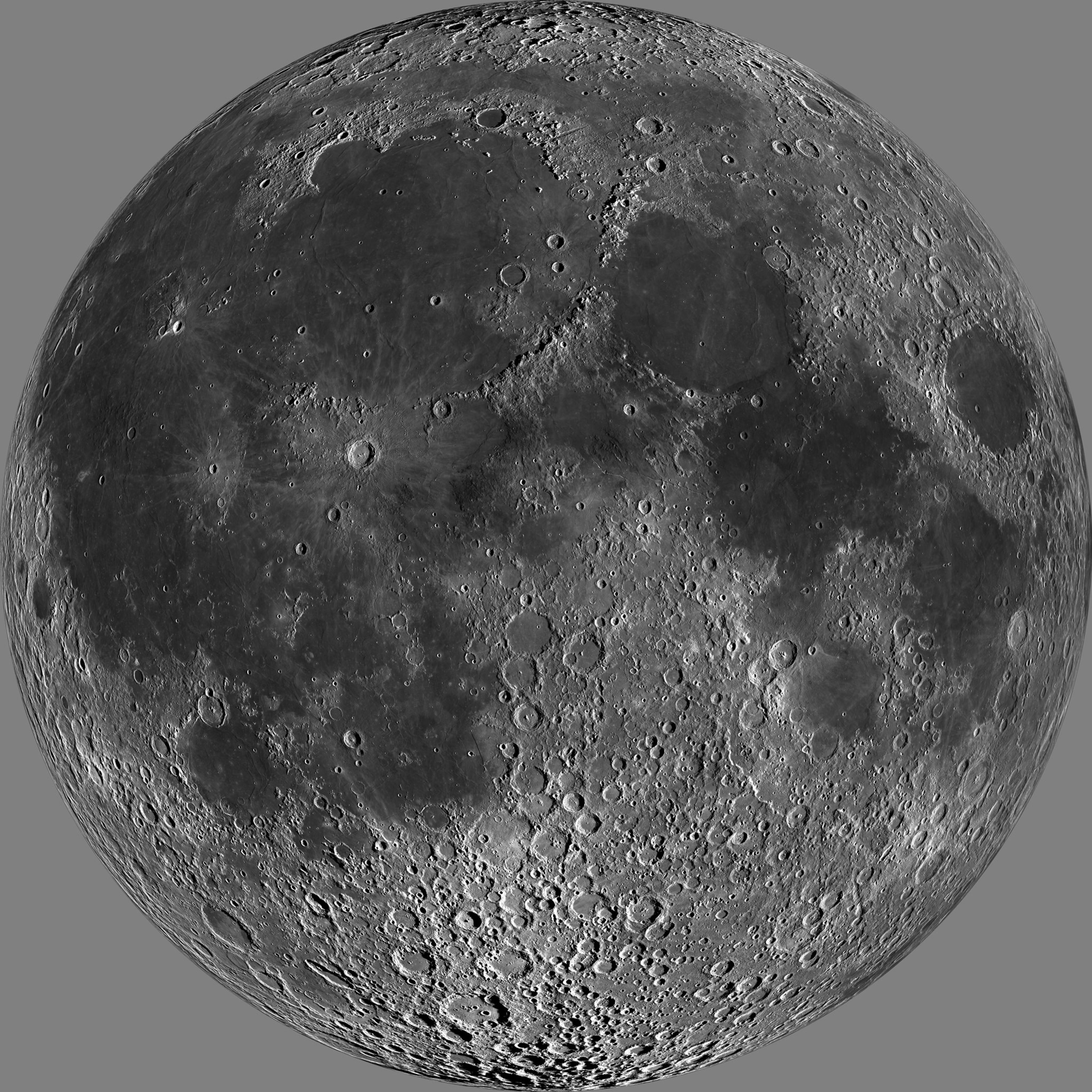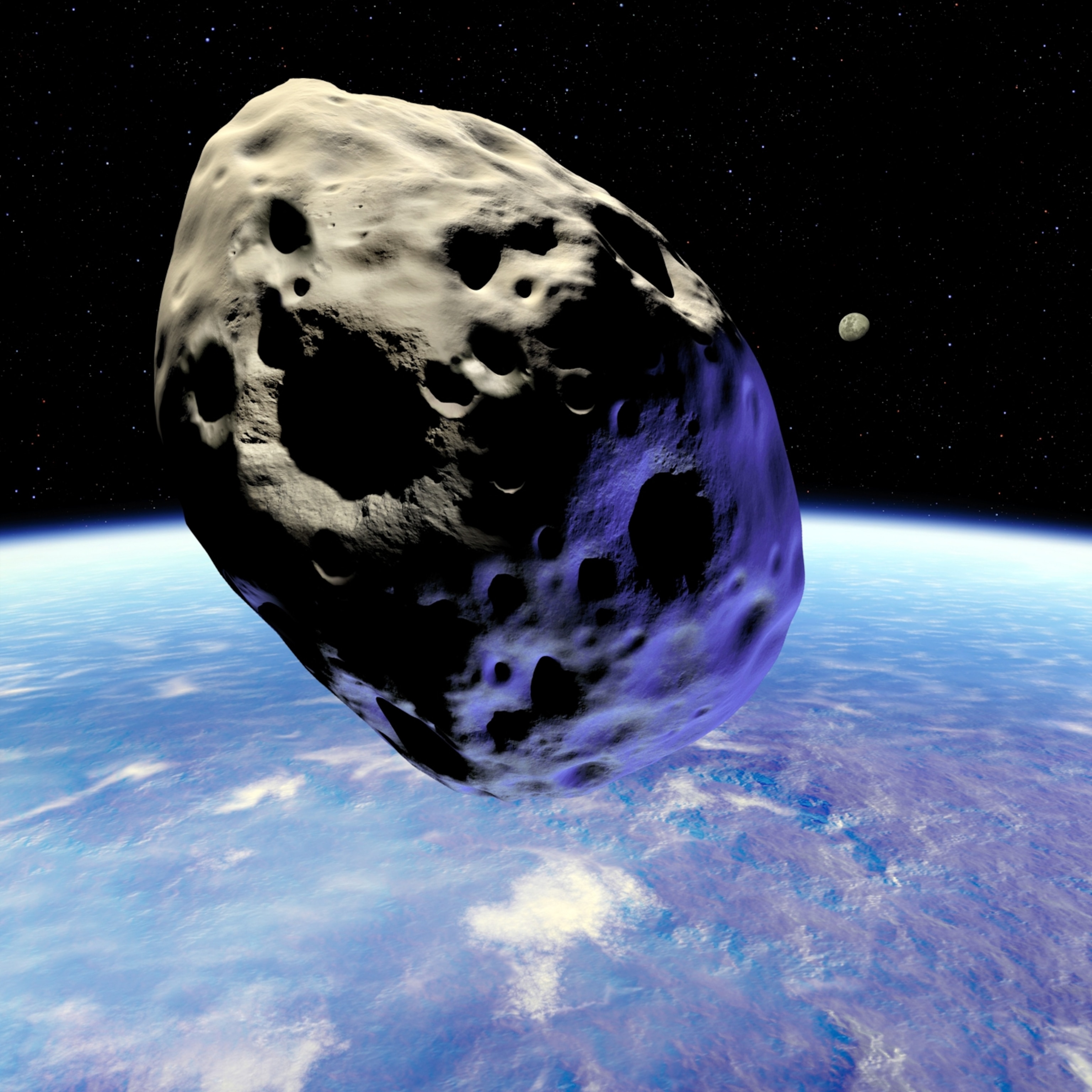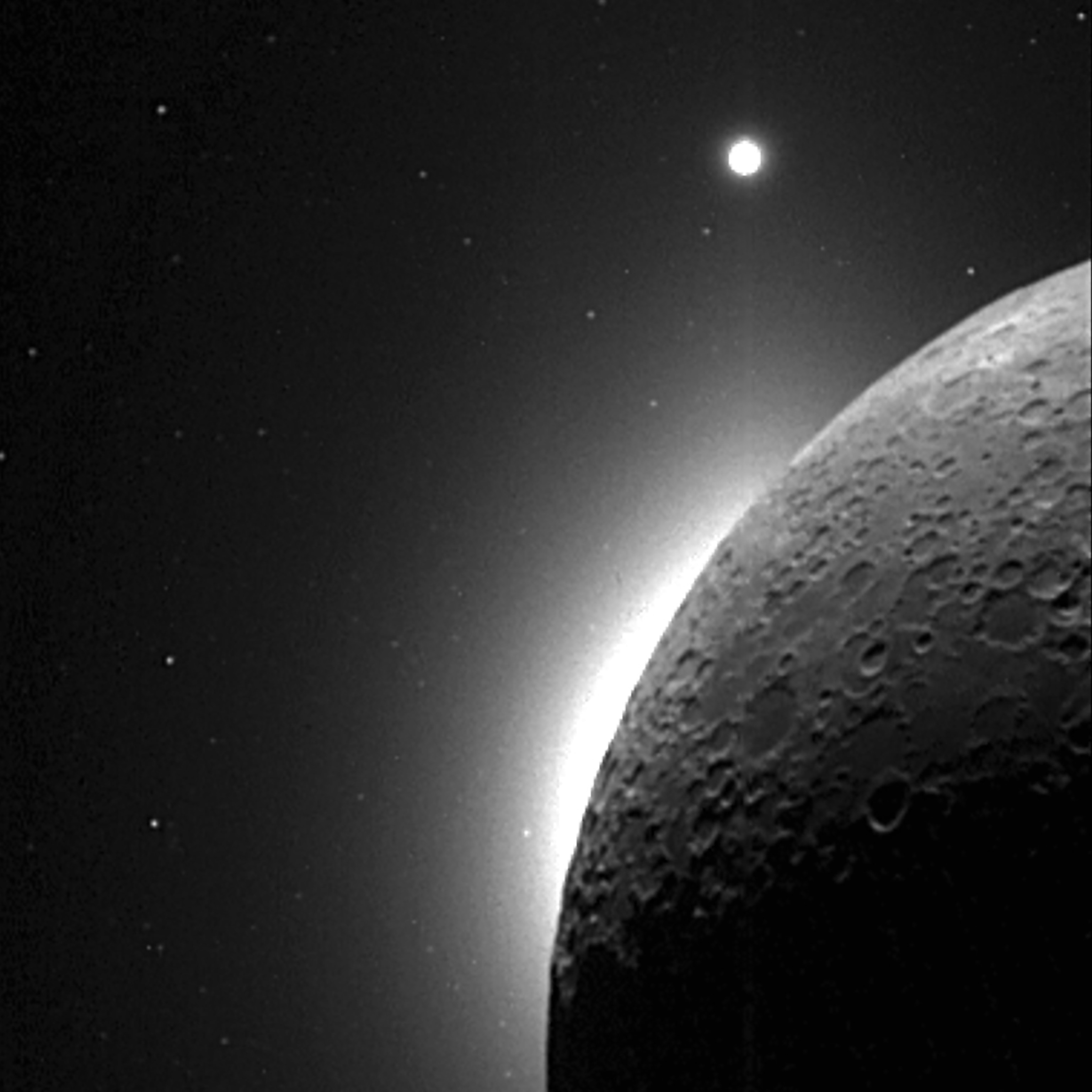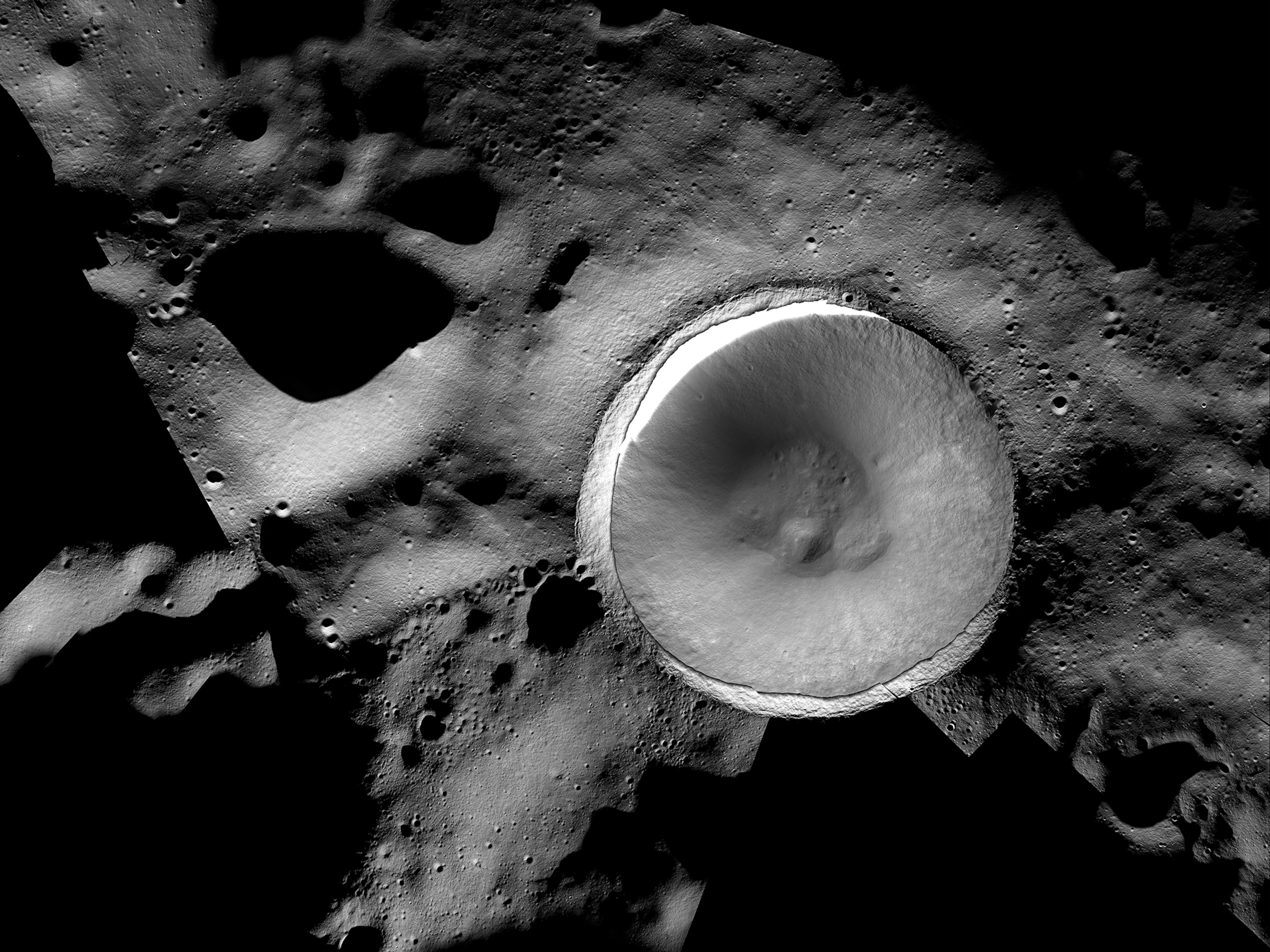For years, scientists have worked to uncover the mysteries of water on the moon. Now two new studies published in Nature Astronomy confirm that water may be found all over the lunar surface.
One study reports the first unambiguous evidence for water molecules clinging to or encapsulated within grains in the lunar soil on the sunlit swaths of the surface. The second study modeled small zones on the moon cast in permanent shadow and found that some 15,400 square miles—an area equivalent to nearly 7,500,000 football fields—are cold enough to harbor ice, about 20 percent more than once thought.
By investigating what forms of water linger on the lunar surface and where that water is, scientists hope to better understand the moon’s mysterious water cycle. Unlike on Earth, where water circulates in rivers and rain, the formation of water on the moon may be driven by hydrogen in the solar wind reacting with oxygen on the surface, as well as by icy meteorites that strike the ground. Lunar water may also migrate from sunny regions to shadowy zones.
But the exact movements of this water, and possible transfer from sunny to shadowy zones, remain mysterious. “We still have a lot of work to understand if at all they’re connected,” says Jessica Sunshine, a planetary scientist at the University of Maryland who was not part of either study team. But the new research “suggests a much more complex process than what we thought before.”
This work is also vital for future humans traveling to the moon and beyond, including NASA’s upcoming Artemis mission that promises to place the first woman and next man on the moon. The presence of water and ice hints it may be possible to mine this resource to convert to fuel, reducing the load future spacefarers must take in their ventures beyond Earth.
The new insight into lunar water is part of a slow shift in the way we think of our planetary companion. Once thought to be a dessicated landscape, this dynamic world has complex sources and sinks of many forms of water.
“It’s been a slow revolution,” says Paul Hayne, a planetary scientist at the University of Colorado Boulder and lead author of the shadow zone study. “But it’s been a revolution.”
A watery world
The moon is a world of extreme hot and cold. Daytime temperatures near the lunar equator can climb to a scorching 250°F, while nighttime can plunge to a frosty minus 208°F. And without a thick protective atmosphere, evaporated water can quickly escape to space.
But to scientists’ delight, faint traces of water seem to persist in the sunlit lunar surface. Instruments on three spacecraft confirmed the discovery, announced in 2009, but there was a catch: The analysis couldn’t tell the difference between water and hydroxyl.
The researchers were looking for signatures of water on the lunar surface in infrared light. Similar to visible light split through a prism, “infrared has its own rainbow, even though we can’t see it,” says Casey Honniball, a postdoctoral researcher at NASA’s Goddard Space Flight Center and lead author of the study on molecular water. These earlier analyses focused on a part of the infrared spectrum where both water and hydroxyl glow. By choosing a different section of the spectrum Honniball and her colleagues zeroed in on just the H2O.
“I honestly don’t know why someone hadn’t thought of it sooner—it's a brilliant idea,” says Sunshine, who worked on the 2009 detections of watery signals on the moon.
For the new study, Honniball and her colleagues collected data during a 2018 flight of the Stratospheric Observatory for Infrared Astronomy (SOFIA)—an infrared telescope mounted on a jumbo jet. A couple of months later, Honniball was processing the data from the comfort of her couch when the water signal appeared. “I think I screamed,” she says.
While present, the water is likely scarce, roughly equivalent to 12 ounces in a cubic meter of dirt. That’s a hundred times drier than the Sahara desert, Honniball notes, though she cautions that more work is needed to verify the concentrations of water, since the estimate is based on one observation, at one location, at one time in the lunar day.
But it’s a long-awaited confirmation for Sunshine. “It’s very rewarding,” she says. “I’m very grateful that they did the work.”
Into the shadows
The second study focused on the shadowy crevices of the lunar surface. Scientists have long suspected that water could linger as ice within massive craters in permanently shaded areas. The presence of ice in such spots was confirmed in October 2009 when NASA crashed part of the LCROSS spacecraft into a shadowed area near the moon’s south pole and detected evidence of ice in the impact plume.
Researchers have since mapped these large frosty regions. But after looking at high-resolution images of the moon’s surface from NASA’s Lunar Reconnaissance Orbiter, the new study team realized that shaded icy zones could be more common than thought, occurring even in very small areas. Every time they zoomed in on the images, they kept seeing more: “It’s shadows all the way down,” Hayne says.
By modeling temperatures and shadows on the moon, the team found that ice could form in tiny areas—as small an ant. These minute shadows can be just as cold as their bigger counterparts, Hayne notes. The moon’s atmosphere is so thin, it doesn’t equalize surface temperatures, so a boiling hot spot can be next to an area that is hundreds of degrees below zero.
The new research suggests that the area covered by cold, shadowy zones is about 20 percent greater than previously estimated. If all these zones are full of frost, the amount of ice would equate to billions of kilograms of water, Hayne says. But how many actually have ice is still an open question.
The slow revolution
Together, the studies could help scientists start to piece together how the lunar water cycle works. Water on the moon comes from a few different sources. Some might arrive with meteorites that collide with the surface, but some also likely forms when hydrogen from the solar wind reacts with surface oxygen to form hydroxyl. Heat from the sun or micrometeorite impacts could cause hydroxyl molecules to collide to form H2O, Honniball says.
The heat from impactors such as micrometeorites could also melt some of the rocky surface and vaporize any water nearby. As the melt cools to glass, it could encapsulate the water vapors—and that may account for the watery signal Honniball and her team spotted.
But exactly how and where water moves around on the surface remains unknown. Meteorites could liberate some water from the surface, and the sun could also play a role in moving the water around, since the signal for water and hydroxyl weakens as the heat peaks in the lunar day, Sunshine says. "Do we really lose it, or does it go to some shadow zone?" she wonders. "These small scale cold traps could help us understand."
Scientists still have much to learn about lunar water, but some answers may be on the way. In 2022, NASA plans to send the Volatiles Investigating Polar Exploration Rover (VIPER) to the moon’s south pole to search for water ice. Further clues should come from the Lunar Compact Infrared Imaging System (L-CIRIS), also slated for a 2022 mission, Hayne says.
Scientists have speculated about the presence of water on the moon since at least the 1960s, but in the coming years, we should finally develop a full picture of where lunar water is hidden—and whether we could use it to aid future explorers.









